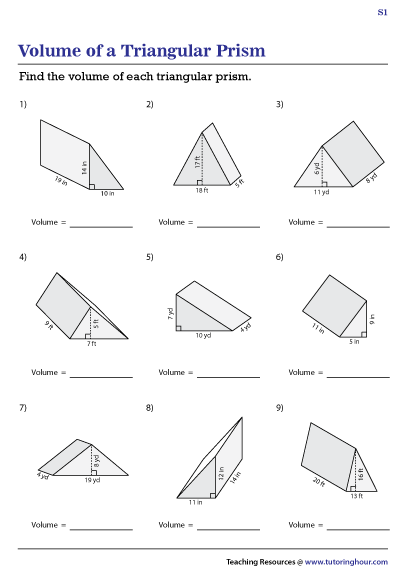

The surface area of a triangular prism is the sum of the areas of its 3 lateral faces and 2 bases and is given by the formula, Where B is the area of a triangular base and h is the height (the distance between the two parallel bases) of the triangular prism. The volume, V, of a triangular prism is the area of one of its bases times its height: Triangular prism formulas Volume of a triangular prism Any cross section of the triangular prism that is parallel to the bases will yield a triangle that is congruent to the bases.All lateral faces are congruent all bases are congruent.

Lateral faces (rectangles / parallelograms): 3.Note that this is just one net of a triangular prism. The net of a 3D figure is what the figure would look like if opened out and laid flat: The figure below shows a net of a triangular prism. The figure below shows a triangular prism labeled with its respective parts. The 3 lateral faces are also congruent and can be rectangles, parallelograms, or squares depending on the type of triangular prism. The triangles are congruent and are referred to as the bases of the triangular prism. The figure below shows three types of triangular prisms.Ī triangular prism is a 3D shape, specifically a polyhedron, that is made up of 2 triangles and 3 lateral faces. Home / geometry / shape / triangular prism Triangular prismĪ triangular prism is a prism with triangular bases.


 0 kommentar(er)
0 kommentar(er)
